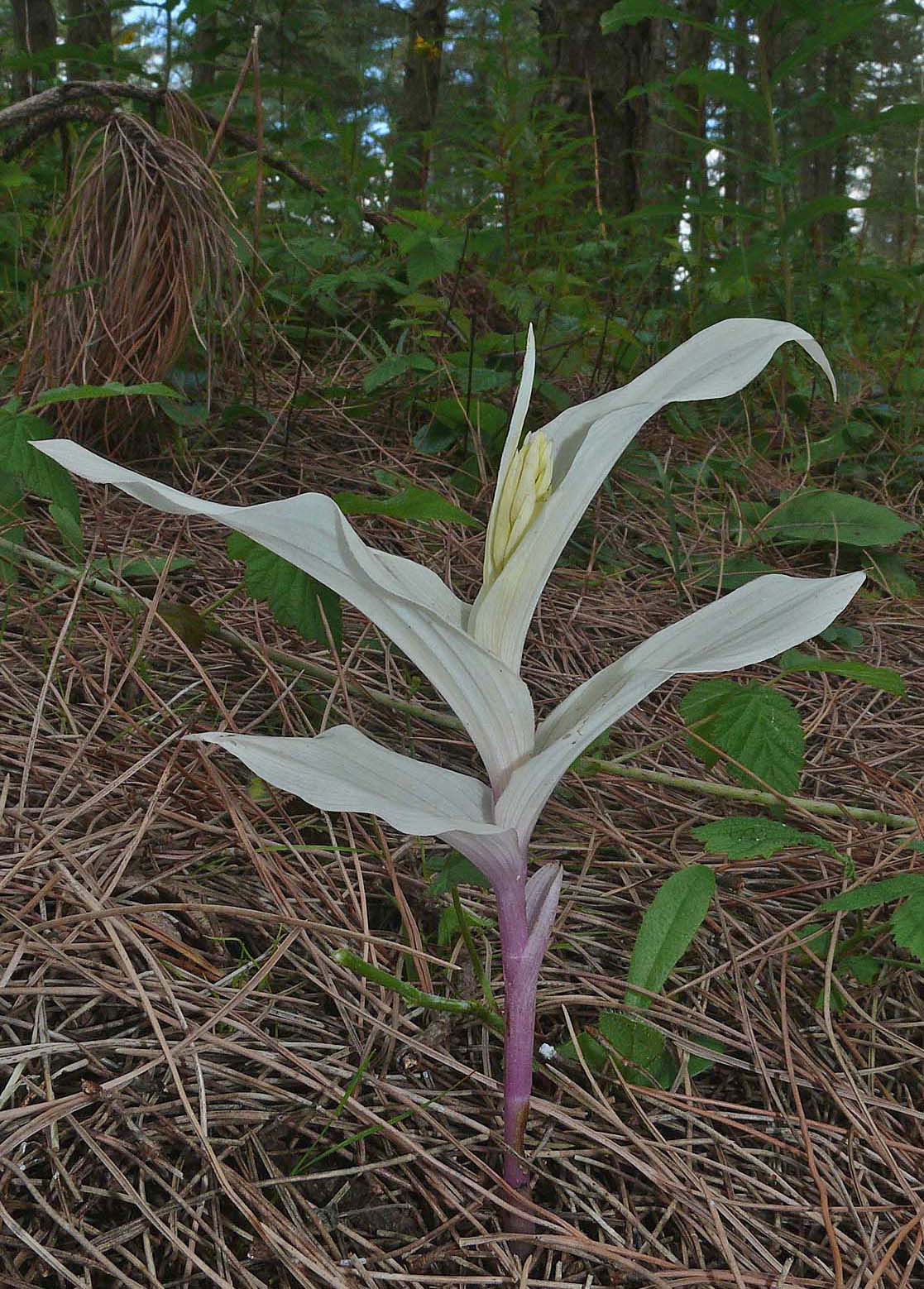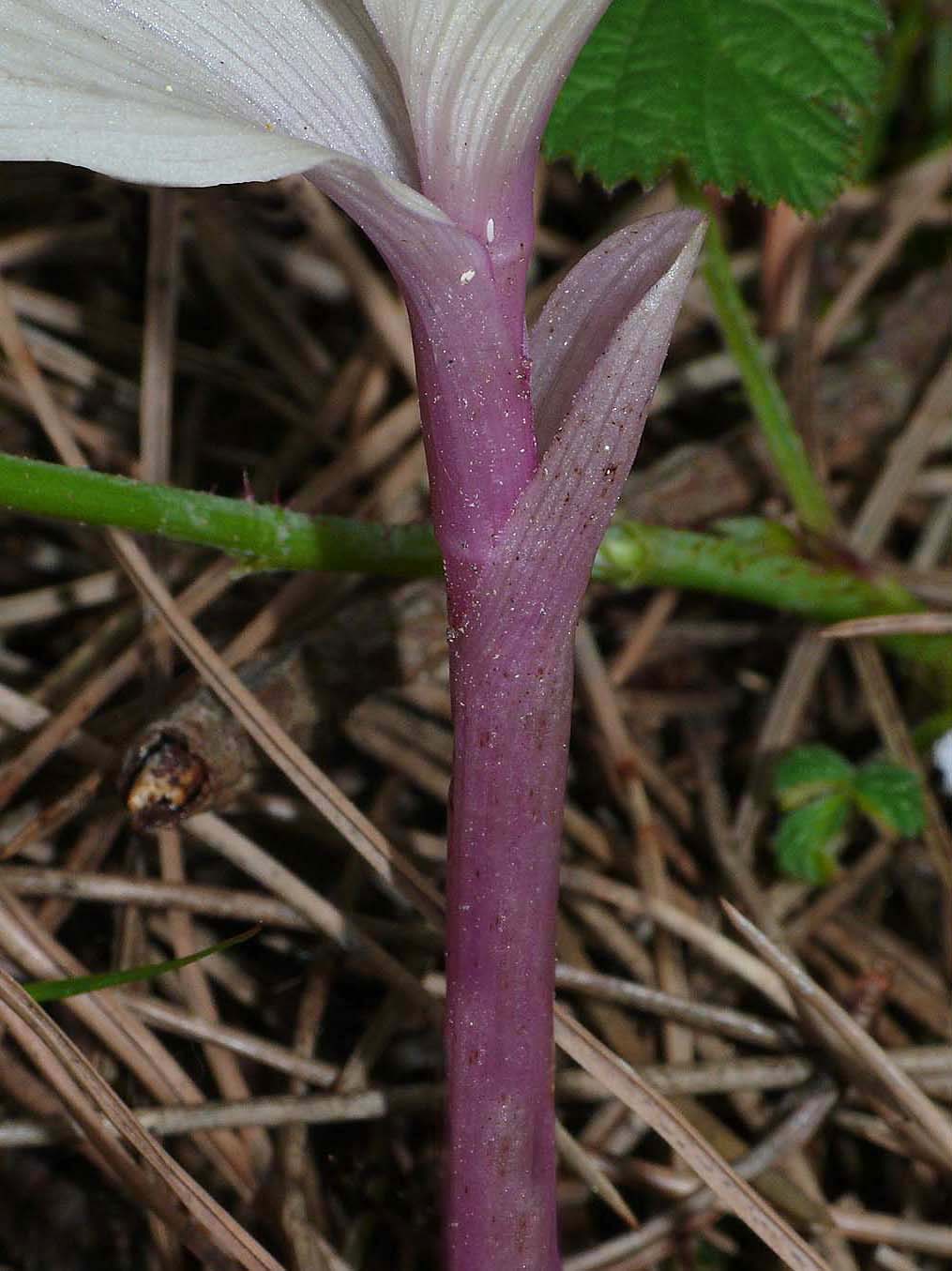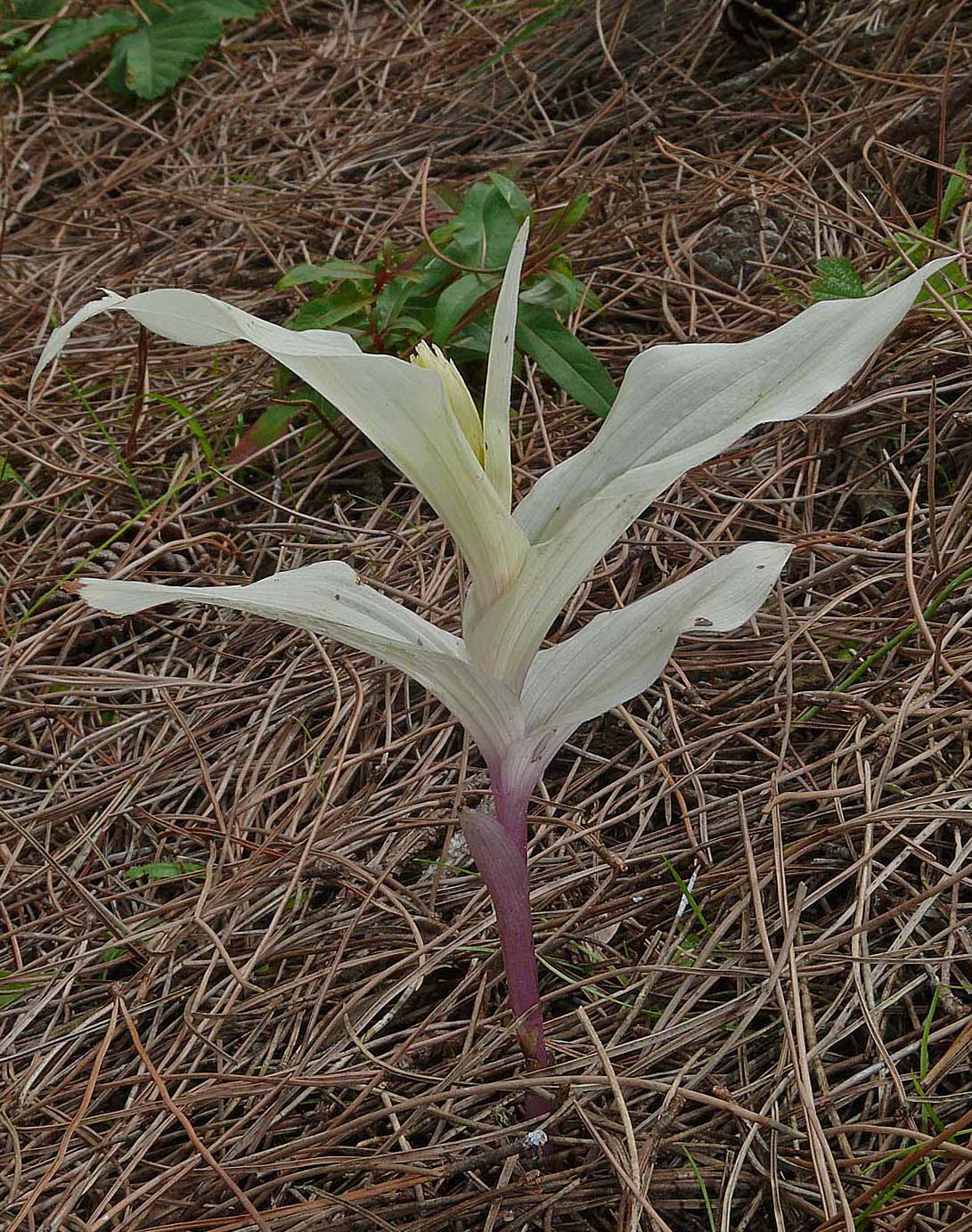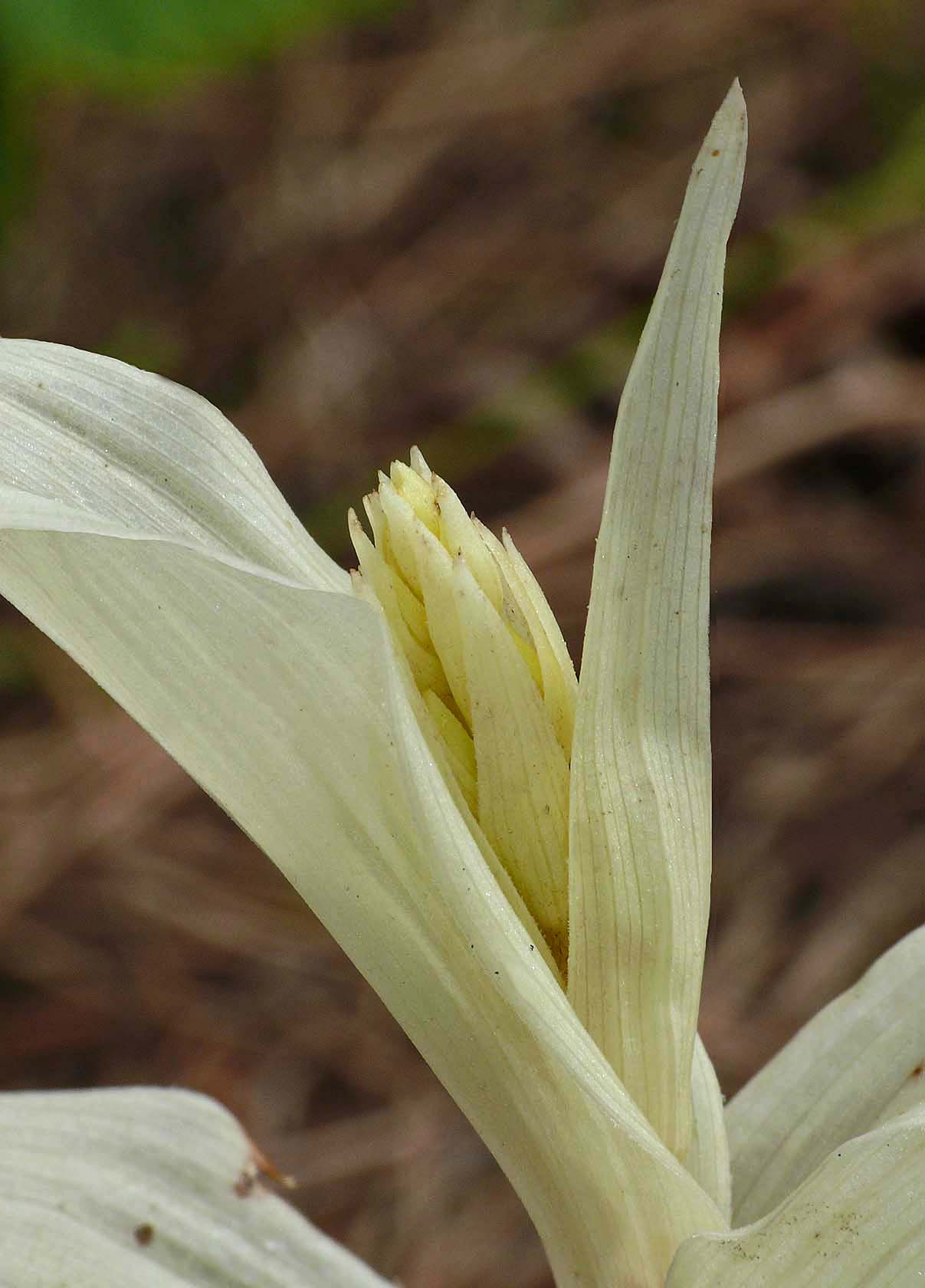E. dunensis was first described by Stephenson and Stephenson from Lancashire, England in 1918 and
notwithstanding debate concerning its relationship to E. youngiana and E. sancta does not seem to be a highly variable species. The achlorophyllous form of Epipactis dunensis depicted here, has been provisionally named Epipactis dunensis var. albifolia on this website but it should be noted that this name has not been validly published under the ICN and, in the absence of a herbarium specimen which could serve as the required holotype, it is not at present possible to validly publish a name for it.
E. dunensis v albiflora is an aberrant orchid that owes its existence to the plants abnormal production of
chlorophyll rather than any genetic event that has an evolutionary significance. In fact, the majority of
plants that experience this deficiency are generally somewhat feeble, with a lack of viability that leads
to their early disappearance.
This type of hypochromy is very rare but seems to occur within Epipactis more frequently than within
any other genus and E. purpurata is perhaps the most common species so affected. Despite the fact that
hypochromatic plants lack real viability, some colonies of E. purpurata have been known to persist for a
number of years. In cases where a plant lacks both pigment and chlorophyll, it necessarily has to become
saprophytic in order to survive, it will also be pure white and therefore an albino. Complete albinism is
however very rare and is more often observed as a partial condition that effects just part of a flower or
plant. This is the case with the E. dunensis illustrated on this page, where the leaves are seen to be
pure white but the stem of the
plant is pale violet, indicating that this area is
receiving anthocyanins. It is not known if this plant (which was one of
two at the site at Newborough Warren) ever survived to fully flower but
given the slug damage already sustained, it seems doubtful.



